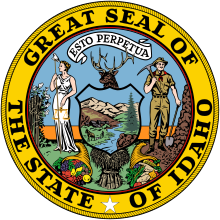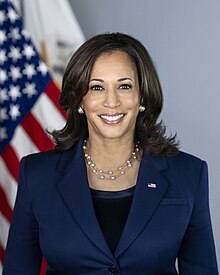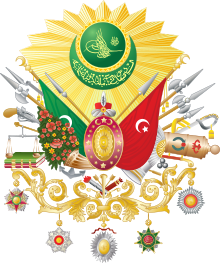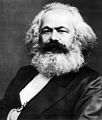Portal:Politics
| Main | Topics and categories | Tasks and projects |
The Politics portal
Politics (from Ancient Greek πολιτικά (politiká) 'affairs of the cities') is the set of activities that are associated with making decisions in groups, or other forms of power relations among individuals, such as the distribution of resources or status. The branch of social science that studies politics and government is referred to as political science.
It may be used positively in the context of a "political solution" which is compromising and non-violent, or descriptively as "the art or science of government", but also often carries a negative connotation. The concept has been defined in various ways, and different approaches have fundamentally differing views on whether it should be used extensively or in a limited way, empirically or normatively, and on whether conflict or co-operation is more essential to it.
A variety of methods are deployed in politics, which include promoting one's own political views among people, negotiation with other political subjects, making laws, and exercising internal and external force, including warfare against adversaries. Politics is exercised on a wide range of social levels, from clans and tribes of traditional societies, through modern local governments, companies and institutions up to sovereign states, to the international level.
In modern nation states, people often form political parties to represent their ideas. Members of a party often agree to take the same position on many issues and agree to support the same changes to law and the same leaders. An election is usually a competition between different parties.
A political system is a framework which defines acceptable political methods within a society. The history of political thought can be traced back to early antiquity, with seminal works such as Plato's Republic, Aristotle's Politics, Confucius's political manuscripts and Chanakya's Arthashastra. (Full article...)
Selected article
The Ordinances of 1311 were a series of regulations imposed upon King Edward II by the peerage and clergy of the Kingdom of England to restrict the power of the king. The twenty-one signatories of the Ordinances are referred to as the Lords Ordainers. English setbacks in the Scottish war, combined with perceived extortionate royal fiscal policies, set the background for the writing of the Ordinances in which the administrative prerogatives of the king were largely appropriated by a baronial council. The Ordinances reflect the Provisions of Oxford and the Provisions of Westminster from the late 1250s, but unlike the Provisions, the Ordinances featured a new concern with fiscal reform, specifically redirecting revenues from the king's household to the exchequer. Just as instrumental to their conception were other issues, particularly discontent with the king's favourite, Piers Gaveston, whom the barons subsequently banished from the realm. Edward II accepted the Ordinances only under coercion, and a long struggle for their repeal ensued that did not end until Thomas of Lancaster – the leader of the Ordainers – was executed in 1322.
Featured picture

Parliament House is the meeting facility of the Parliament of Australia located in Canberra, the capital of Australia. The building was designed by Mitchell/Giurgola Architects and opened on 9 May 1988 by Elizabeth II, Queen of Australia. At the time of the construction, it was the most expensive building in the world at more than A$1.1 billion.
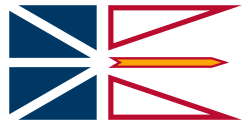
The premier of Newfoundland and Labrador is current title of the first minister for the Canadian province of Newfoundland and Labrador, which was at certain points in its history a colony, dominion, and province. The province had a system of responsible government from 1855 to 1934, and again since 1949. Newfoundland became a British crown colony in 1855, in 1907 it became a dominion, and in 1949, it became a province and joined Canadian Confederation. Since then, the province has been a part of the Canadian federation and has kept its own legislature to deal with provincial matters. The province was named Newfoundland and Labrador on April 1, 1949 .
The province has a unicameral Westminster-style parliamentary government, in which the premier is the leader of the party that controls the most seats in the House of Assembly. The premier is Newfoundland and Labrador's head of government, and the king of Canada is its head of state and is represented by the lieutenant governor of Newfoundland and Labrador. The premier picks a cabinet from the elected members to form the Executive Council of Newfoundland and Labrador, and presides over that body. Members are first elected to the House during general elections. General elections must be conducted every four years from the date of the last election. An election may also take place if the governing party loses the confidence of the legislature by the defeat of a supply bill or tabling of a confidence motion. (Full article...)
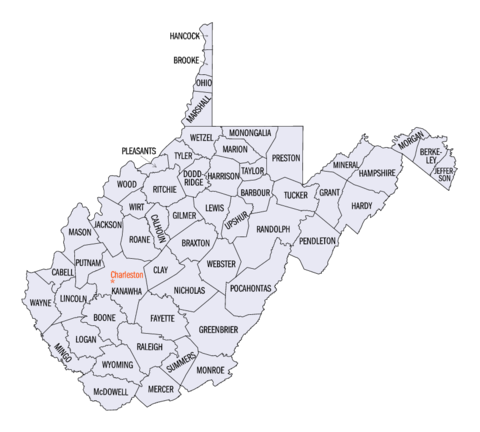
The U.S. state of West Virginia has 55 counties. Fifty of them existed at the time of the Wheeling Convention in 1861, during the American Civil War, when those counties seceded from the Commonwealth of Virginia to form the new state of West Virginia. West Virginia was admitted as a separate state of the United States on June 20, 1863. Five additional counties (Grant, Mineral, Lincoln, Summers, and Mingo) were formed from the original counties in the decades following admission.
After the Civil War, Berkeley County and Jefferson County, the two easternmost counties of West Virginia, refused to recognize their inclusion in the state, and the Virginia General Assembly passed legislation attempting to reclaim them. In March 1866, the United States Congress passed a joint mandate assenting to their inclusion in the new state, and the Supreme Court of the United States confirmed this outcome in the case of Virginia v. West Virginia (1871). (Full article...)
The governor of Idaho is the head of government of Idaho and commander-in-chief of the state's military forces. The officeholder has the duty to see state laws are executed, power to either approve or veto bills passed by the Idaho Legislature. The current governor of Idaho is Brad Little, a Republican, who took office on January 7, 2019.
Thirty-one individuals have held the office of governor of Idaho since the state's admission to the Union in 1890, two of whom served non-consecutive terms. The state's first governor, George L. Shoup, had the shortest term, of three months; Cecil Andrus had the longest, of 14 years. (Full article...)
The prime minister of Luxembourg (Luxembourgish: Premierminister vu Lëtzebuerg; French: Premier ministre luxembourgeois; German: Premierminister von Luxemburg) is the head of government of Luxembourg. The prime minister leads the executive branch, chairs the Cabinet and appoints its ministers.
Since 1989, the title of Prime Minister has been an official one, although the head of the government had been unofficially known by that name for some time. Between 1857 and 1989, the prime minister was styled the President of the Government, with the exception of the 25-day premiership of Mathias Mongenast. Before 1857, the prime minister was the President of the Council. In addition to these titles, the prime minister uses the title Minister of State, although this is usually relegated to a secondary title. (Full article...)
The governor of Pennsylvania is the head of government of the U.S. state of Pennsylvania, as well as commander-in-chief of the state's national guard.
The governor has a duty to enforce state laws and the power to approve or veto bills passed by the Pennsylvania General Assembly, as well as to convene the legislature. The governor may grant pardons except in cases of impeachment, but only when recommended by the Board of Pardons. (Full article...)

The governor of New York is the head of government of the U.S. state of New York, the head of the executive branch of New York's state government, and the commander-in-chief of the state's military forces. The officeholder has a duty to enforce state laws, to convene the New York State Legislature, the power to either approve or veto bills passed by the legislature, as well as to grant pardons, except in cases of treason and impeachment.
Fifty-seven people have served as state governor, four of whom served non-consecutive terms (George Clinton, DeWitt Clinton, Horatio Seymour, and Al Smith); the official numbering lists each governor only once. There has only been one female governor so far: Kathy Hochul. This numbering includes one acting governor: the lieutenant governor who filled the vacancy after the resignation of the governor, under the 1777 Constitution. The list does not include the prior colonial governors nor those who have acted as governor when the governor was out of state, such as Lieutenant Governor Timothy L. Woodruff during Theodore Roosevelt's vice presidential campaign in 1900, or Acting Speaker of the New York State Assembly Moses M. Weinstein, who acted as governor for 10 days in 1968 while the governor, the lieutenant governor and the senate majority leader were out of the state, attending the Republican National Convention in Miami. (Full article...)
The first lady of the United States is the hostess of the White House. The position is traditionally filled by the wife of the president of the United States, but, on occasion, the title has been applied to women who were not presidents' wives, such as when the president was a bachelor or widower, or when the wife of the president was unable to fulfill the duties of the first lady. The first lady is not an elected position; it carries no official duties and receives no salary. Nonetheless, she attends many official ceremonies and functions of state either along with or in place of the president. Traditionally, the first lady does not hold outside employment while occupying the office, although Eleanor Roosevelt earned money writing and giving lectures, but gave most of it to charity, and Jill Biden has maintained her regular job as an educator during her time in the role. The first lady has her own staff, including the White House social secretary, the chief of staff, the press secretary, the chief floral designer, and the executive chef. The Office of the First Lady is also in charge of all social and ceremonial events of the White House, and is a branch of the Executive Office of the President.
There have been total of 54 first ladies including 43 official and 11 acting, within 46 first ladyships. This discrepancy exists because some presidents had multiple first ladies. Following Joe Biden's inauguration on January 20, 2021, his wife, Jill Biden, became the 43rd official first lady. (Full article...)
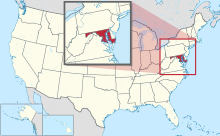
The Maryland House of Delegates is the lower house of the Maryland General Assembly, the state legislature of the U.S. State of Maryland. Three delegates are elected from each district, though some districts are divided into sub-districts. In the original state constitution, four delegates were elected from each county to one-year terms, and two were elected from each of the major early cities of Baltimore and Annapolis. Reforms in the 1830s, however, led to the apportionment of delegates by population rather than geography, and by 1922, delegates served four year terms. The modern system of apportionment of seats began in 1972, when 47 districts of roughly equal population were identified, although sub-districts were created to ensure local representation for areas with too little population to warrant an entire district.
Delegates are elected in even years when the President of the United States is not being elected, similar to most other state offices in Maryland. The most recent election was in November 2022. Delegates are not term-limited. (Full article...)
The Cabinet of the United States, which is the principal advisory body to the President of the United States, has had 65 female members altogether, with seven of them serving in multiple positions for a total of 72 cabinet appointments. Of that number, 38 different women held a total of 41 permanent cabinet posts, having served as the Vice President or heads of the federal executive departments; 31 more women held cabinet-level positions, which can differ under each president; and four officeholders served in both cabinet and cabinet-rank roles. No woman held a presidential cabinet position before the ratification of the 19th Amendment in 1920, which prohibits the federal government or any state from denying citizens the right to vote on the basis of sex.
Frances Perkins became the first woman to serve in a president's cabinet when she was appointed Secretary of Labor by President Franklin D. Roosevelt in 1933. Patricia Roberts Harris was the first African-American woman and the first woman of color to serve in a presidential cabinet when she was named Secretary of Housing and Urban Development by President Jimmy Carter in 1977. Two years later, Carter tapped her for Secretary of Health and Human Services, therefore making her the first woman to hold two different cabinet positions. Madeleine Albright, who was born in Czechoslovakia, became the first foreign-born woman to serve in a president's cabinet when she was picked by President Bill Clinton for United States Ambassador to the United Nations, a cabinet-rank position, in 1993. She was elevated to Secretary of State four years later, during Clinton's second term, thus becoming the highest-ranking woman in the federal government's history at the time. (Full article...)
The Mayor of Pichilemu is an elected politician who is the head of the executive branch of government of the commune of Pichilemu, Libertador General Bernardo O'Higgins Region, Chile. The mayor presides over the local city council, composed of six members, and serves as the civic representative of the commune. The mayor is popularly elected in a municipal election, by simple majority. The office is held for a four-year term without term limits.
Forty different individuals, including acting mayors, have held the office of mayor since the commune of Pichilemu was created in December 1891. José María Caro Martínez, elected in 1894, was the inaugural mayor of the commune, and served for almost four consecutive terms, interrupted by his resignation in 1905. The current mayor is independent Cristian Pozo Parraguez, who was elected in May 2021 and took office on that 28 June. (Full article...)
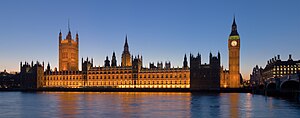
This is a list of people who have addressed both Houses of the United Kingdom Parliament at the same time. Although English and later British monarchs have jointly addressed the House of Commons and the House of Lords on several occasions since the 16th century, the first foreign dignitary to do so was French President Albert Lebrun in March 1939. The list excludes the speeches given by (or on behalf of) the Sovereign at the State Opening of Parliament and at the close of each parliamentary session.
Only four people besides the reigning monarch at the time have addressed both Houses together on more than one occasion. Nelson Mandela addressed Members of the Commons and the Lords in 1993 and in 1996 as President of South Africa. Mikhail Gorbachev addressed the Houses as a secretary of the Communist Party of the Soviet Union and a foreign delegate of the Soviet Union in 1984 and again, in 1993, on behalf of the Inter-Parliamentary Union. Shimon Peres addressed the Houses as Prime Minister of Israel in 1986 and as President in 2008. Volodymyr Zelenskyy addressed the Houses as President of Ukraine, the first to address in the Chamber (albeit via remote video link from Ukraine), in 2022 during the war in Ukraine. (Full article...)
The sultans of the Ottoman Empire (Turkish: Osmanlı padişahları), who were all members of the Ottoman dynasty (House of Osman), ruled over the transcontinental empire from its perceived inception in 1299 to its dissolution in 1922. At its height, the Ottoman Empire spanned an area from Hungary in the north to Yemen in the south and from Algeria in the west to Iraq in the east. Administered at first from the city of Söğüt since before 1280 and then from the city of Bursa since 1323 or 1324, the empire's capital was moved to Adrianople (now known as Edirne in English) in 1363 following its conquest by Murad I and then to Constantinople (present-day Istanbul) in 1453 following its conquest by Mehmed II.
The Ottoman Empire's early years have been the subject of varying narratives, due to the difficulty of discerning fact from legend. The empire came into existence at the end of the 13th century, and its first ruler (and the namesake of the Empire) was Osman I. According to later, often unreliable Ottoman tradition, Osman was a descendant of the Kayı tribe of the Oghuz Turks. The eponymous Ottoman dynasty he founded endured for six centuries through the reigns of 36 sultans. The Ottoman Empire disappeared as a result of the defeat of the Central Powers, with whom it had allied itself during World War I. The partitioning of the Empire by the victorious Allies and the ensuing Turkish War of Independence led to the abolition of the sultanate in 1922 and the birth of the modern Republic of Turkey in 1922. (Full article...)
Selected quote
Selected biography
The early life and military career of John Sidney McCain III spans the first forty-five years of his life (1936–1981). McCain's father and grandfather were admirals in the United States Navy. McCain was born on August 29, 1936, in the Panama Canal Zone, and attended many schools growing up as his family moved among naval facilities. McCain graduated from the United States Naval Academy in 1958. He married the former Carol Shepp in 1965; he adopted two children from her previous marriage and they had another child together.
As a naval aviator, McCain flew attack aircraft from carriers. During the Vietnam War, he narrowly escaped death in the 1967 Forrestal fire. On his twenty-third bombing mission during Operation Rolling Thunder in October 1967, he was shot down over Hanoi and badly injured. He subsequently endured five and a half years as a prisoner of war, including periods of torture. In 1968, he refused a North Vietnamese offer of early release, because it would have meant leaving before other prisoners who had been held longer. He was released in 1973 after the Paris Peace Accords.
Did you know (auto-generated) -

- ... that Nigeria's Muslim–Muslim ticket challenges the norm of religious balance in politics?
- ... that Satrio Sastrodiredjo and Moerachman, both former mayors of Surabaya, Indonesia, were held as political prisoners in the same prison after the 30 September Movement in 1965?
- ... that nearing the end of his tenure as mayor of Tegal, Indonesia, Adi Winarso took part in a talkshow with his former political competitors?
- ... that before entering politics, Romina Pérez worked at the Center for Legal Studies and Social Research, which "became a 'nursery' for intellectual and political cadres of the Movement for Socialism"?
- ... that after a career as political journalist, Peter Merseburger wrote biographies of Der Spiegel founder Rudolf Augstein and chancellor Willy Brandt?
- ... that the continuing influence of the Catholic Church in the politics of the Philippines means that the country lacks a divorce law?
More did you know...
- ...that the traditional form of government in Tibet from 1642 to 1951 was the Cho-sid-nyi?
- ...that politicians discuss the ways in which they and their families have suffered because of Oprahization?
- ...that Democratic and Republican plans for the 2012 United States federal budget both focus on deficit reduction, but differ in their changes to taxation, entitlement programs, and research funding?
- ...that Conservative Party candidate Bernard Trottier won a seat in the 41st Canadian Parliament by defeating the incumbent Leader of the Liberal Party of Canada in the 2011 federal election?
- ...that just before the invasion of Poland, members of the German minority from Deutscher Volksverband were trained in sabotage by the Abwehr agents arriving in Poland from Germany?
- ...that tiao-kuai is the quasi-federal administration system in China?
In this month
- May 5, 2005 – A General Election in the United Kingdom sees Tony Blair's Labour government returned to office with a reduced majority of 66.
- May 14, 1948 – The Declaration of Independence of Israel is made.
- May 18, 1948 – The first Legislative Yuan of the Republic of China officially convenes in Nanking.
News and Current events
- August 11: 4 local government areas in New South Wales, Australia locked down after COVID-19 case
- August 11: Australia: AstraZeneca vaccine access expanded by Victorian government
- August 1: Australia: Victorian lockdown lifted
- July 29: Tunisia's president dismisses prime minister, suspends parliament
- July 25: Australia: Wikinews interviews Reg Kidd, mayor of the City of Orange, about COVID-19 lockdown and local government
- July 23: South Australia enters week-long lockdown to contain COVID-19 Delta variant spread
- July 21: Technological University Dublin senior lecturer Dr Lorcan Sirr speaks to Wikinews on housing market in Ireland
- July 21: Three rural councils in New South Wales, Australia enter 7-day lockdown
- July 21: Australia: Victoria lockdown extended by a week with 85 active cases recorded
- July 15: California governor signs new state budget, eligible Californians to get stimulus payments
Topics and categories
General images
Related portals
Associated Wikimedia
The following Wikimedia Foundation sister projects provide more on this subject:
-
Commons
Free media repository -
Wikibooks
Free textbooks and manuals -
Wikidata
Free knowledge base -
Wikinews
Free-content news -
Wikiquote
Collection of quotations -
Wikisource
Free-content library -
Wikiversity
Free learning tools -
Wiktionary
Dictionary and thesaurus



